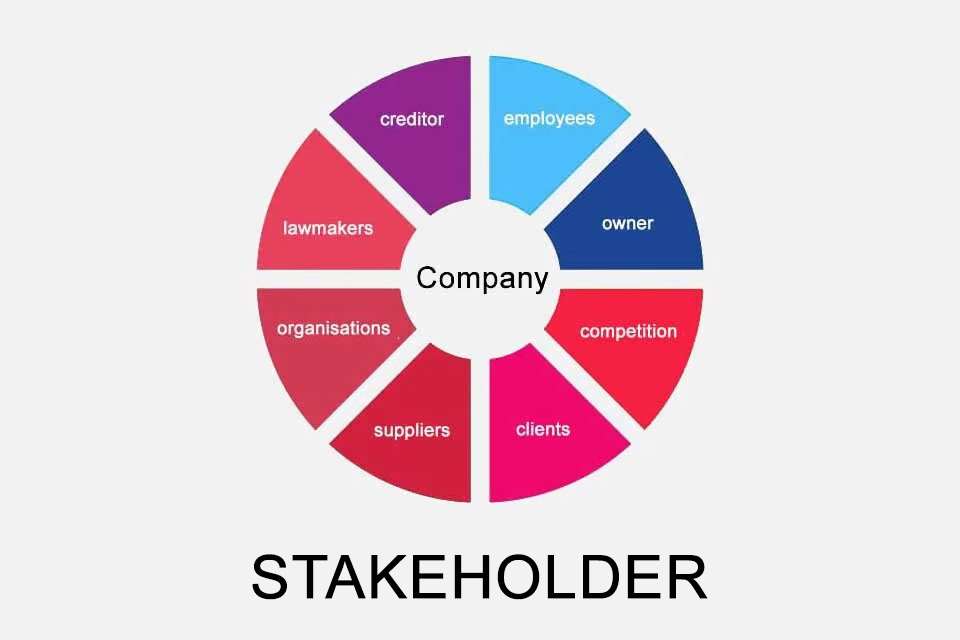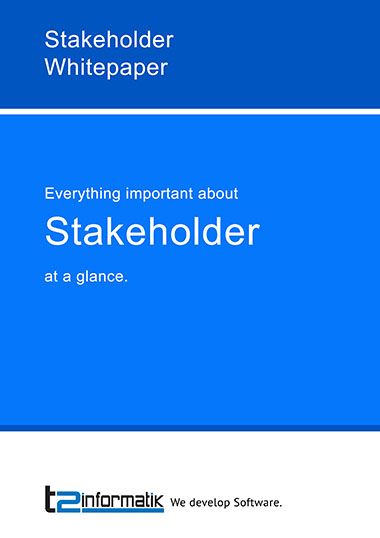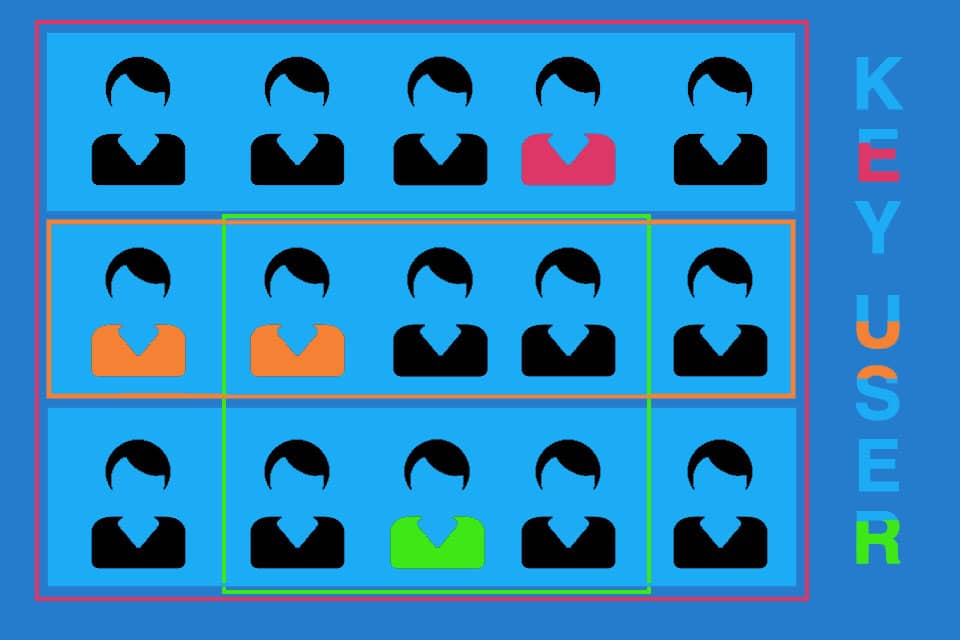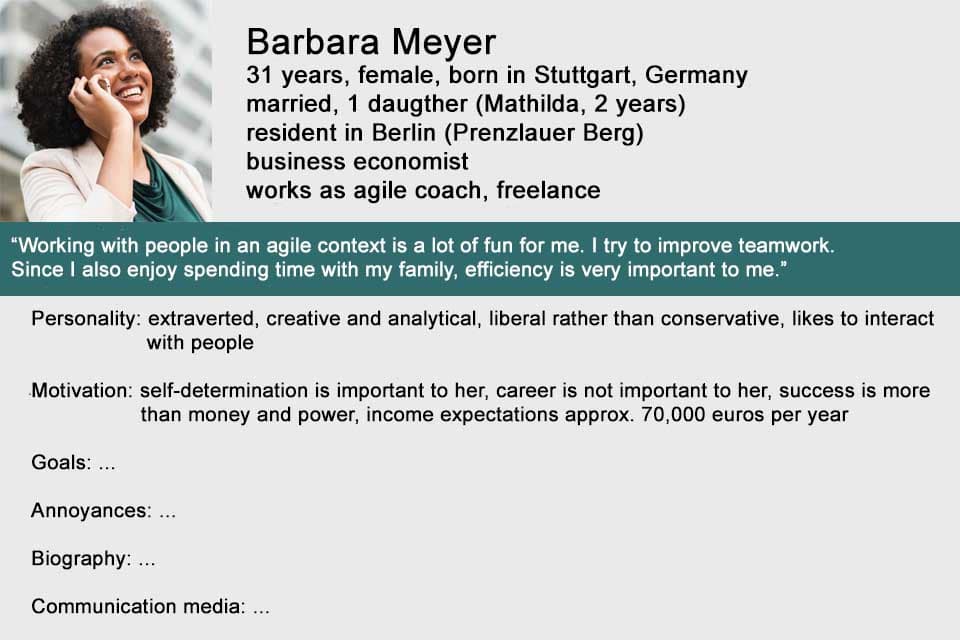What is a Stakeholder?
Table of Contents: Definition – Stakeholder Management – Tips – Questions from the field – Download – Notes
Smartpedia: Stakeholders are all persons or organisations that are directly or indirectly affected by or have an interest in the activities of a company.
Stakeholder Definition
Many things that companies do or don’t do have an impact on people and organisations. Stakeholders are all internal and external persons and groups of persons who are directly or indirectly affected by activities of a company or who have a concrete interest in these activities. They can be natural persons or legal entities.
The term stakeholder is derived from the two words stake and holder. The word stake means entitlement or share, holder means owner or proprietor. Stakeholders are therefore also referred to as interest groups or participants who have an interest in the activities of a company because their input is at stake.
- employees and customers,
- suppliers and partners,
- trade unions, associations and consumer organisations,
- as well as capital providers such as owners, silent partners, shareholders or banks.
In addition, also
- competitors,
- institutions,
- authorities or
- legislator
are stakeholders, because they can significantly influence the achievement of corporate goals.
What is Stakeholder Management?
Stakeholder management addresses the targeted, continuous engagement of a company with its interst groups. It comprises three central tasks that build on each other:
- identification,
- analysis and
- communication.
Stakeholder identification aims to identify all organisations and individuals that are directly or indirectly affected by a company’s activities or have a concrete interest in these activities. The result should be a list of all interested parties.
Within the scope of a stakeholder analysis, companies must recognise their relevant participants, their expectations and possibilities of influence, as well as the associated opportunities and risks. This is important because interest groups behave differently. At a cinema box office, a customer would probably wait several minutes in the queue at the box office, but in an online shop he would not accept this.
Who ignores stakeholders
- often does not know what is to be developed,
- does not recognise problems in time,
- neglects those who have a relevant interest in the success of a project,
- missed opportunities to improve products and systems,
- detects too late when a project gets into trouble.
Stakeholder communication addresses the regular exchange between a company and its collaborators. It differs in type, means, frequency and timing. And it is very important because people pursue individual goals. Conflicts can easily arise between the goals of individuals, e.g. if quality leadership on the one hand and price leadership on the other are strived for. Such professional conflicts easily become personal conflicts as well. Conflicts also often arise when management believes it knows what customers want and defines its own opinion as the benchmark for future actions.
Tips for Dealing with Stakeholders
How do you find out who your stakeholders are and what their motives, attitudes or goals are? Here are some tips on how to deal with them:
- Identification and analysis should be done as early as possible, because it is a basis for eliciting requirements.
- Both identification and analysis are not one-off tasks, because people change their opinions and priorities in the course of a project.
- A structured approach to identification and analysis is useful, but usually does not need to be reinvented for every project or development; the use of good practices is useful here.
- The procedure itself should be reviewed regularly, because mistakes in identification, analysis or communication can quickly have far-reaching consequences.
- Ideally, you should document and version the findings of the identification and analysis, because this will enable you to trace project changes back to changes in associates at a later point. If the documentation also includes agreements with representatives of individual groups, this also facilitates communication with these representatives at a later point in time.
- Develop a clear communication plan that sets out how and when you will communicate with the various stakeholders. This may include regular updates, meetings or reports.
- Be prepared to respond to changes in stakeholder needs and expectations. Flexibility is important to adapt to changing circumstances, opinions, motives or goals.
- Conflicts may arise. Listen actively and try to understand stakeholders’ perspectives. Ideally, they will look for constructive, practicable solutions. Effective conflict management strengthens relationships with stakeholders. At the same time, be transparent about intentions, decisions and progress. Open communication often promotes trust and minimises misunderstandings, even if you cannot fulfil all the wishes of all stakeholders.
Questions from the field
Here you will find some questions and answers from the field:
What is the difference between stakeholder and shareholder?
In theory, the interests of involved parties are only taken into account if a positive effect on the company’s success can be expected. However, since companies are hardly in a position to focus exclusively on the interests of shareholders or the needs of stakeholders, both approaches are usually pursued simultaneously in practice. Possible conflicts can be visualised with goal diagrams.
How can good stakeholder documentation be achieved?
The following information should be recorded in the course of stakeholder documentation:
- What is the influence of the stakeholder?
- What is their attitude and motivation towards the project or undertaking?
- What goals are they pursuing?
- How influenceable are they?
- How is the stakeholder perceived and how do they express their opinion?
- What conflicts are there between them and other stakeholders?
It also makes sense to document the contact details with the appropriate communication options and communication times, as well as the conflicts with other stakeholders. Here you will find a template for creating a stakeholder list.
What is stakeholder mapping?
When working on projects and developing products, companies need to identify all relevant stakeholders and understand how their power and interest influence the success of the undertaking. Stakeholder mapping offers a solution here by creating a visual representation of stakeholders based on their importance. This method helps companies and project teams to develop targeted communication and management strategies to improve collaboration and recognise and manage potential conflicts at an early stage.
Typical forms of visual representation are matrix, circle or mind map, alternatively there is also a tabular representation.
Here you can find more details on stakeholder mapping.
What is a stakeholder matrix?
The stakeholder analysis identifies the most important stakeholders with their interests, power, attitudes and influence. The stakeholder matrix visualises the findings in relation to each other in an XY diagram. Which properties are shown as organisational characteristics on which axes varies. For example,
- the influence of individual people from low to high,
- the attitude towards a defined undertaking from critical to positive,
- the opinion from fixed to open,
- influenceability from low to high or
- interest from low to high
can be visualised.
Here you can find more information on the stakeholder matrix.
What is stakeholder alignment?
The development of products, the realisation of projects or the implementation of a corporate strategy are often faced with the challenge of taking into account the different interests of stakeholder groups. The difficulty lies in coordinating these interests and achieving a common vision. A lack of stakeholder alignment can lead to delays, conflicts and the failure of undertakings. Stakeholder Alignment offers a structured approach to understand, consider and align the interests of all stakeholders and affected parties towards common goals to ensure the success of undertakings.
Here you can find more information on stakeholder alignment.
What challenges arise when dealing with stakeholders?
- The identification process was carried out once several years ago and has been used again and again since then – without checking for correctness or completeness. Using existing stakeholder lists is not necessarily wrong, but the list should always be critically scrutinised and updated.
- Identification is not carried out at all because the owner of the company believes he knows the market. In such a situation, it would certainly be right to ask the owner where he got his knowledge from and how valid it actually is. However, this requires courage, resilience and possibly also a certain standing in the organisation.
- Product Owners and product managers are of course also stakeholders, but above all they are representatives for other stakeholders. Knowing what the Product Owner wants or believes is therefore not really enough.
- The analysis is taken lightly because, after all, “you know what the customer wants”. Unfortunately, this attitude is widespread in many organisations and can lead to products that “nobody” wants, that provide features that “nobody” understands and that “nobody” uses.
- When analysing, relationships between individuals or groups of people are often overlooked. For example, if an undertaking is supported by one person, this could lead to the other person rejecting the undertaking if the relationship between that person and another person is poor. Analytical skills, moderation and often tact are required here.
- Communication takes place without a plan. Based on the identification and analysis, the people or organisations important for a development or project should be determined with their goals, motives and wishes. The frequency of communication should, for example, be geared towards the specific importance of the stakeholder and, of course, their time and formal expectations.
Of course, the list can easily be extended, as life presents the best challenges. The important thing is that you identify your challenges, analyse them and communicate about them.
What steps help when dealing with critical stakeholders?
- Firstly, it is important to understand the critics’ perspectives. Open discussions and active listening often help to recognise concerns, objections or reasons for rejection.
- Every point of view deserves respect. Respect is shown when objections and personal assessments and experiences are taken seriously and responded to in substance.
- Proactive action, giving reasons for decisions, communicating goals, documenting agreements and solving problems quickly often help when dealing with critical people.
And what can organisations do if nothing changes for the better despite these steps? Then it can be useful to look for advocates who have a good relationship with the critical people and promote the project, development or change. In some situations, escalating a conflict or calling in external experts can also help; there is no one-size-fits-all solution.
Who is more important for a company's success: customers or employees?
The discussion about the role of customers is often accompanied by a discussion about the importance of employees. Who is more important for the success of a company: the employees or the customers? Three opinions can be grouped together:
- Employees are more important because without their work and performance, companies would not be able to sell products or services. Without employees, there would be no customers. Consequently, employees are the real kings.
- Customers are at the centre of a company’s attention. They pay the bills and therefore also the employees’ salaries. Without customers, there is no need for employees. So the customer remains king.
- The truth lies in the middle: Employees and customers are equally important and are mutually dependent. They cannot exist without the other. They are two sides of the same coin. Or to put it another way: Employees and customers are kings.
Here you will find a personal assessment of the topic.
Is it deceptive, or is the importance of interest groups still underestimated in many companies today? Why do you think that is?
Notes:
If you like the article or would like to discuss it, please feel free to share it in your network. And if you have any comments, please do not hesitate to send us a message.
Here you can find a German podcast about the challenge of effectively engaging stakeholders.
And here you can find additional information from our Smartpedia section:




